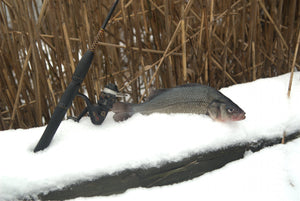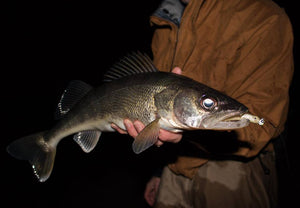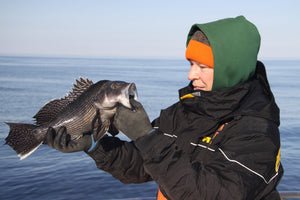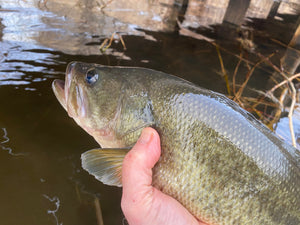Late-Night Forays: Poppin' Bay Bass
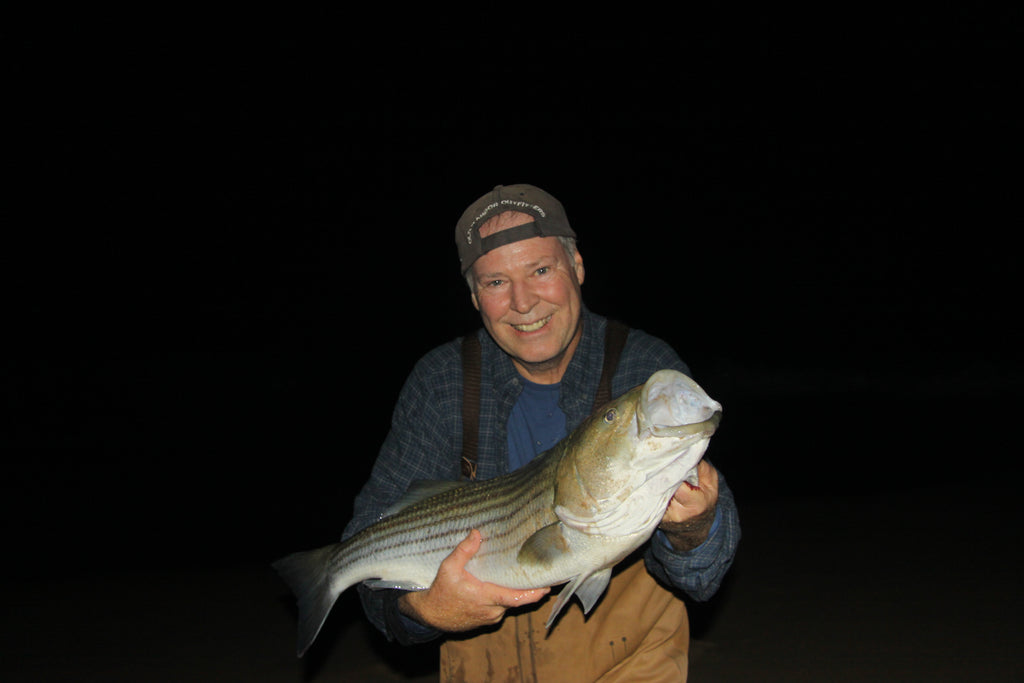
Catching apex predators on the graveyard shift is always exciting. Catching them on poppers while probing the shallow flats on Long Island’s East-End bays adds another element to the game that only increases the fun and suspense.
With waters warm in late July, August and September, fishing for these feisty species can be a little tough on the inshore scene. Fortunately, like some stealthily successful anglers who prefer to get away from the crowds, stripers, bluefish and even weakfish often expand their range by following rising tides up onto shallow flats during late-night flood tides. With the sun eliminated, and boating traffic at a minimum, all three can feel secure enough to venture into as little as a foot or two of water while scrounging the bottom for crabs and small baitfish – and they do it more often than you might think. Some nights the flats are simply awash with fish.
Now, catching bass, blues and weaks late at night on the flats isn’t any great news. The twist here is taking them with surface poppers - lures that most saltwater anglers reserve for daytime use. This is BIG fun, but it takes some effort and scouting to get things right. The keys are to find the right kind of flats and focus on the top of the flood and start of ebbing tides. That takes an investment in time and effort but the rewards can be outstanding.

FINDING THE RIGHT FLATS
To be sure, not all flats areas hold fish for popping. Thus, the first thing you need to do to get in on this fun is isolate what should be the most productive water. There are plenty of places in eastern Peconic Bay and Shinnecock Bay that hold late-night bass, blues and weaks – but there are also stretches that seem to be almost void of fish. Only by spending time on the water can you really begin to separate out the more productive spots from the lesser ones. As a rule, sometimes broken, fairly large flats that parallel deep channels or structure offer the most consistent action. As you move deeper into the bays, look for areas that run along a main channel, areas where large tidal creeks empty into the bigger waters, or flats that are drained by deep cuts, to hold the most fish.
Naturally, any flats that lie within 100 yards of a bridge, dock, marina or well-known daytime hot spot are worth exploring. Check to make sure that these flats are alive, not barren. A “live” flat holds blue crabs, horseshoe crabs, shellfish beds and small baitfish. Flats where you see clammers tread or donkey rake during the day are often especially productive. Shallow, sandy areas bordering marshy islands are also excellent choices. Look specifically for flats areas where the water tops out at less than three feet deep at high tide. In other words, search for very shallow flats. Also, a fair amount of current should push through the area. No current, no predator fish, it’s a simple as that. As a rule, the best flats are sandy, or sport a fine sand/mud mix. Dark muddy waters generally don’t produce well for popping at night.
FISH THE MOON
Because the waters you’ll work are exceedingly shallow, they’ll tend to hold smaller fish than most traditional striper, blue and weakfish hot spots. That’s just fine if action and fun are the goal and you don’t feel any pressure to land a lunker. As a rule, stripers in this scenario will measure between two and eight pounds with an occasional teen or twenty-pounder tossed in just to keep things honest. The sleek and stealthy weakfish, on the other hand, can run big in the shallows with some topping six or even eight pounds. Lunker blues are also a possibility – especially during late August and September – with sizes ranging from two-pound cocktails to 15-pound “gators.”
Although you may be able to find a few fish on the flats on any random night, the best action for popping with surface plugs strongly coincides with “moon” tides. From three days before the full or new moon to three days after, the fishing seems to hit a peak. Give a slight edge to the full moon phase because it is easier to see your lure, pole along, track your drift, wade safely, and spot tell-tale ripples on the surface that indicate feeding or cruising fish.

SSSHHHH….
One of the most important ideas to keep in mind when preparing to pop the flats is to approach the fishing grounds quietly. The fish here are a bit outside of their usual comfort zone and can be quite skittish. If wading, step slowly. With a boating approach, move in at a crawl, position yourself well up-tide of your target area, cut the engine, and drift in or pole silently up onto the flats. Keep chatter to a minimum as you work along and, if you do deck a fish, try to release it without letting it bang around in the boat. On nights when the schools are thick on the flats, it sometimes helps to drift in then anchor up so you can cast quarter to the current.
As you blend quietly into your surroundings, and your eyes and ears adjust to the darkness, the fish will begin to reveal themselves with surface slaps, swirls and an occasional bonafide surface explosion. Give yourself some time and you might even begin to spot a few tails or fins in shallow water, allowing you to sight-fish at night.
LIGHT TACKLE GAME
The tackle you’ll need to pull off this late-night, shallow water popper action is relatively light. Any sturdy, fast-tapered spinning stick capable of handling 20 pound test braid should do well. The prime requirement is that the rod tip have enough stiffness to “pop” your lure across the surface. A seven- to seven-and-a-half-foot, “medium” power St. Croix, Shimano or Tsunami "inshore" rod matched to a Penn Battle III, Penn Slammer IV, Shimano Stradic spinning reel in the 3,000 to 4,000 size works great for this application. These combos can toss poppers in the one-half to two-ounce range (2-1/2- to 4-inch length). As a rule, you’ll be throwing smaller poppers with this approach since school bass, small blues and an occasional weakfish are the usual targets. Among some of the lures you might want to try are Super Strike Little Neck Poppers, Yo-Zuri 3D Inshore and Hydro Poppers, and Madd Mantis Cherry Poppers. These same offerings, by the way, can double nicely as early morning or late evening temptations.
As for popper colors, the basic rule for this application is dark colors on dark nights, light colors on light nights. Figure black, white, dark blue and silver are what you need to cover all the bases. Unless you’ve been on a successful pattern in recent trips, start your late-night “moon tide” sessions with a black or dark color scheme as these are easiest to track at night and probably offer attacking fish the clearest silhouette as they approach from underneath.
- Bryce Poyer

